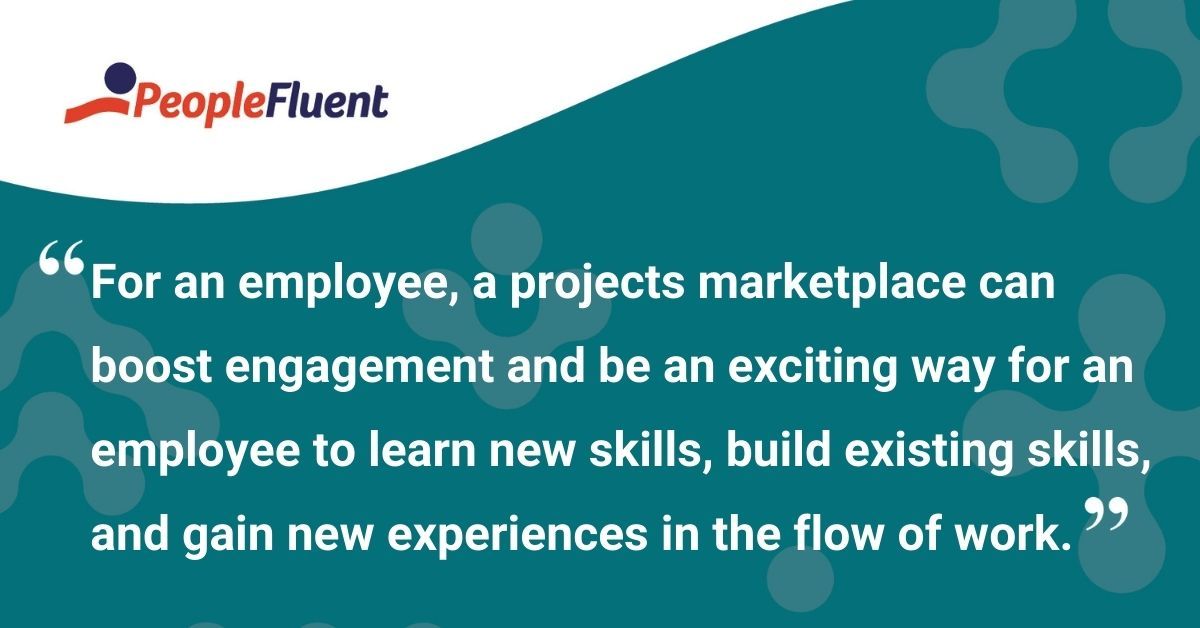According to Forbes, reskilling is one of the top five business trends of 2021. Incentivizing employees to participate in projects can help them build new skills, be more engaged, and operate in a more agile way. It’s also a big win for companies looking to support shifting priorities by staffing projects internally. So how do you get started? A projects marketplace could be just what you need. Keep reading to find out more.
In 2019, Josh Bersin noted how important it would be for companies to start reskilling their workforces. He called it the ‘build vs buy’ approach and noted that it can cost as much as six times more to recruit outside workers than if you built talent from within.
Fast-forward to 2020 and the need to reskill and upskill became more prevalent as companies were forced to scale back their workforces in response to the global pandemic. This created another challenge-turned-opportunity for leaders and employees alike: internal talent could be used to complete stretch projects as well as fill the skill and process gaps.
Let’s look at what this means for companies going forward, and how a projects marketplace can save you time and make your life easier.
RELATED READING | ‘Upskilling vs. Reskilling: Understanding the Differences and Their Role in Talent Mobility’
Internal vs. External Coverage for Stretch Projects
It can be a very admin-heavy process to identify and match internal workers to specific projects. Little wonder some organizations may have hit snags! For instance, a manager may have to go through the procurement process to find contingent workers due to a lack of skilled internal workers. This means posting projects in a third-party vendor management system and hoping to get a bite.
If a hiring manager wanted to create an internal project, it would usually be managed in a spreadsheet with the assistance of HR. But, this usually means HR and the manager lacked visibility into an employee’s long-term career interests and skills. This made it difficult to market the project to people internally. No wonder the project was either abandoned or put on hold. Plus, this manual process wasn’t scalable and it was difficult to find out who in the organization had the right skills and competencies to take on a project.
So, you can see there are many gaps in the process of manually searching for coverage for stretch projects. Whether seeking internal or external help, it’s a bumpy road without an automated tool. And, it puts added stress on companies needing to run with more agility to remain competitive.

MORE FROM THE BLOG | ‘3 Ways AI Can Drive Internal Mobility at Your Organization’
What Is a Projects Marketplace?
A projects marketplace is similar to a dating site, without the need to swipe left or right. The tool uses AI to match people together, syncing up employees’ career aspirations, skill gaps, and goals to a specific project. It’s a way for companies to encourage cross-functional projects or gigs as managers can:
- Post their projects and see which employees fit the immediate need
- Efficiently deploy people for project-based work that meets the business needs
- Reduce external expenses incurred by third parties to handle project-based work
For an employee, a projects marketplace can boost engagement and be an exciting way for an employee to learn new skills, build existing skills, and gain new experiences in the flow of work. This means productivity isn’t impacted and employees tackle new challenges in your organization that can truly grow and advance their careers.

YOU MIGHT ALSO LIKE | ‘The 5 Pillars of a Successful Talent Mobility Strategy and How to Leverage Them’
What Is the Benefit of Automating Project-Based Work?
Using an automated tool for project-based work can help organizations save a ton of money on freelancers or contingent workers as you’re utilizing current employees. And the added bonus? It boosts employee engagement.
Best of all? The skills and competencies learned through stretch projects can be used for other projects throughout the business, fostering agility along the way.
When employees take part in solving the business challenges while collaborating with other folks they’ve not worked with before, it helps deepen the company culture and promotes innovation. When workers feel called to help on a wider level (as opposed to on a departmental level), they feel responsible for positively impacting the business outcomes. What’s not to love?



